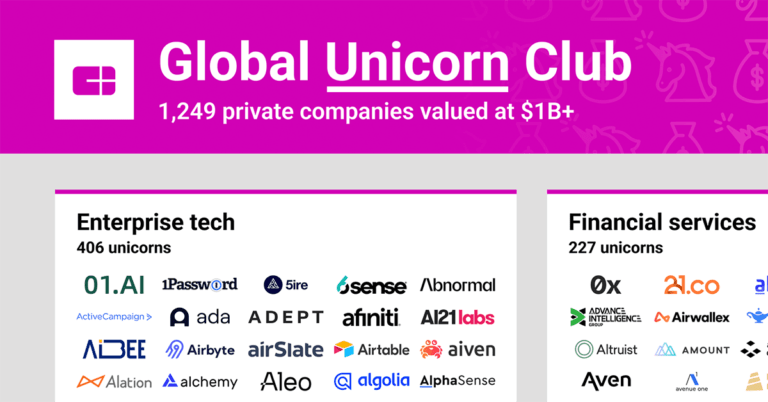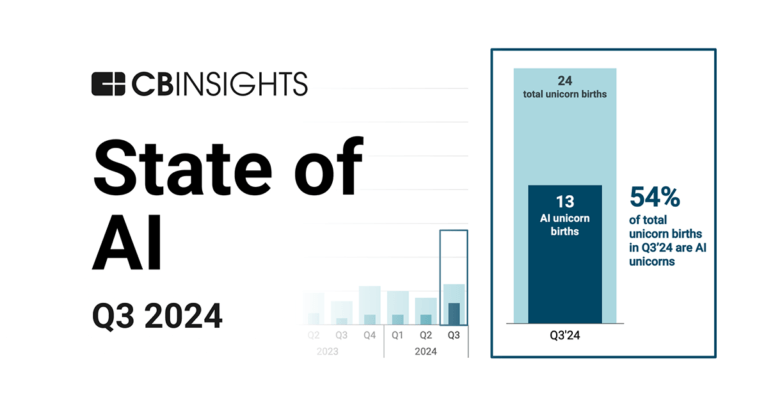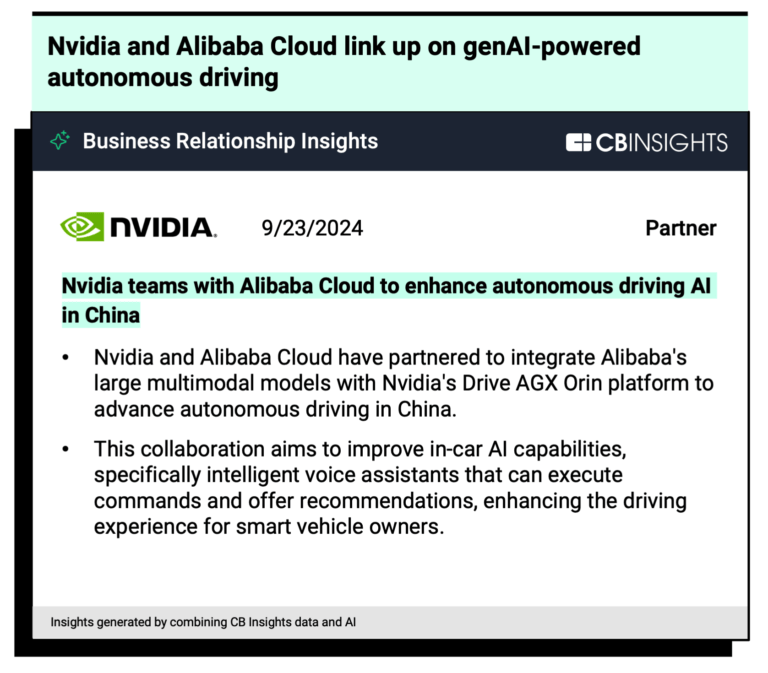
World Labs
Founded Year
2024Stage
Series A - II | AliveTotal Raised
$330MLast Raised
$230M | 6 mos agoAbout World Labs
World Labs focuses on advancing artificial intelligence with an emphasis on human-like visual data processing and reasoning within the tech industry. The company develops models that enable AI to understand and interact with the three-dimensional physical world. It caters its services to robotics, augmented reality, and virtual reality. World Labs' technology is designed to extrapolate images and text into three-dimensional environments. It was founded in 2024 and is based in Stanford, California.
Loading...
Loading...
Research containing World Labs
Get data-driven expert analysis from the CB Insights Intelligence Unit.
CB Insights Intelligence Analysts have mentioned World Labs in 4 CB Insights research briefs, most recently on Dec 10, 2024.

Dec 10, 2024 report
$1B+ Market Map: The world’s 1,249 unicorn companies in one infographic
Oct 29, 2024 report
State of AI Q3’24 Report

Oct 3, 2024 report
State of Venture Q3’24 ReportExpert Collections containing World Labs
Expert Collections are analyst-curated lists that highlight the companies you need to know in the most important technology spaces.
World Labs is included in 3 Expert Collections, including Unicorns- Billion Dollar Startups.
Unicorns- Billion Dollar Startups
1,257 items
Artificial Intelligence
7,146 items
Generative AI
1,298 items
Companies working on generative AI applications and infrastructure.
Latest World Labs News
Jan 16, 2025
Robots need an internal representation of the world and its rules like ours. Aaron Frank Share If you’re not familiar with the concept of “world models” just yet, a storm of activity at the start of 2025 gives every indication it may soon become a well-known term. Jensen Huang, CEO of Nvidia, used his keynote presentation at CES to announce a new platform, Cosmos, for what they’re calling “world foundation models.” Cosmos is a generative AI tool that produces virtual-world-like videos. The next day, Google’s DeepMind revealed similar ambitions with a project led by a former OpenAI engineer. This all comes several months after an intriguing startup, World Labs , achieved unicorn status —a startup valued $1 billion or more—within only four months to do the same thing. To understand what world models are, it’s worth pointing out that we’re at an inflection point in the way we build and deploy intelligent machines like drones, robots, and autonomous vehicles. Rather than explicitly programming behavior, engineers are turning to 3D computer simulation and AI to let the machines teach themselves. This means physically accurate virtual worlds are becoming an essential source of training data to teach machines to perceive, understand, and navigate three-dimensional space. What large language models are to systems like ChatGPT, world models are to the virtual world simulators needed to train robots. Therefore, world models are a type of generative AI tool capable of producing 3D environments and simulating virtual worlds. Just like ChatGPT is built with an intuitive chat interface, world-model interfaces might allow more people, even those without technical game developer skillsets, to build 3D virtual worlds. They could also help robots better understand, plan, and navigate their surroundings. To be clear, most early world models including those announced by Nvidia generate spatial training data in a video format. There are, however, already models capable of producing fully immersive scenes as well. One tool made by a startup called Odyssey , uses gaussian splatting to create scenes which can be loaded into 3D software tools like Unreal Engine and Blender. Another startup, Decart, demoed their world model as a playable version of a game similar to Minecraft. DeepMind has similarly gone the video game route . All this reflects the potential for changes in the way computer graphics work at a foundational level. In 2023, Huang predicted that in the future, “every single pixel will be generated, not rendered but generated.” He’s recently taken a more nuanced view by saying that traditional rendering systems aren’t likely to fully disappear. It’s clear, however, that generative AI predicting which pixels to show may soon encroach on the work that game engines do today. The implications for robotics are potentially huge. Nvidia is now working hard to establish the branding label “physical AI” as a term for the intelligent systems that will power warehouse AMRs , inventory drones , humanoid robots , autonomous vehicles , farmer-less tractors , delivery robots , and more. To give these systems the ability to perform their work effectively in the real world, especially in environments with humans, they must train in physically accurate simulations. World models could potentially produce synthetic training scenarios of any variety imaginable. Be Part of the Future Sign up for SingularityHub's weekly briefing to receive top stories about groundbreaking technologies and visionary thinkers. 100% Free. No Spam. Unsubscribe any time. This idea is behind the shift in the way companies articulate the path forward for AI, and World Labs is perhaps the best expression of this. Founded by Fei-Fei Li, known as the godmother of AI for her foundational work in computer vision, World Labs defines itself as a spatial intelligence company. In their view, to achieve true general intelligence, AIs will need an embodied ability to “reason about objects, places, and interactions in 3D space and time.” Like their competitors, they are seeking to build foundation models capable of moving AI into three-dimensional space. In the future, these could evolve into an internal, humanlike representation of the world and its rules. This might allow AIs to predict how their actions will affect the environment around them and plan reasonable approaches to accomplish a task. For example, an AI may learn that if you squeeze an egg too hard it will crack. Yet context matters. If your goal is placing it in a carton, go easy, but if you’re preparing an omelet, squeeze away. While world models may be experiencing a bit of a moment, it’s early, and there are still significant limitations in the short term. Training and running world models requires massive amounts of computing power even compared to today’s AI. Additionally, models aren’t reliably consistent with the real world’s rules just yet, and like all generative AI, they will be shaped by the biases within their own training data. As TechCrunch’s Kyle Wiggers writes , “A world model trained largely on videos of sunny weather in European cities might struggle to comprehend or depict Korean cities in snowy conditions.” For these reasons, traditional simulation tools like game and physics engines will still be used for quite some time to render training scenarios for robots. And Meta’s head of AI, Yann LeCun, who wrote deeply about the concept in 2022 , still thinks advanced world models—like the ones in our heads— will take a while longer to develop . Still, it's an exciting moment for roboticists. Just as ChatGPT signaled an inflection point for AI to enter mainstream awareness; robots, drones, and embodied AI systems may be nearing a similar breakout moment. To get there, physically accurate 3D environments will become the training ground for these systems to learn and mature. Early world models may make it easier than ever for developers to generate the countless number of training scenarios needed to bring on an era of spatially intelligent machines.
World Labs Frequently Asked Questions (FAQ)
When was World Labs founded?
World Labs was founded in 2024.
Where is World Labs's headquarters?
World Labs's headquarters is located at Stanford.
What is World Labs's latest funding round?
World Labs's latest funding round is Series A - II.
How much did World Labs raise?
World Labs raised a total of $330M.
Who are the investors of World Labs?
Investors of World Labs include Radical Ventures, Andreessen Horowitz, New Enterprise Associates, Intel Capital, Jim Breyer and 19 more.
Who are World Labs's competitors?
Competitors of World Labs include Bifrost and 4 more.
Loading...
Compare World Labs to Competitors

Parallel Domain is a synthetic data platform that specializes in the generation of data for AI development in the autonomous systems industry. The company offers an API that allows users to generate and access sensor data, including camera, LiDAR, and radar, to train and test perception models for various applications. Parallel Domain primarily serves companies developing autonomous vehicles and other autonomous systems that require machine learning and perception capabilities. It was founded in 2017 and is based in San Francisco, California.

Synthesis AI specializes in synthetic data and generative artificial intelligence (AI) technology for the computer vision and machine learning sectors. The company provides simulation and synthetic data solutions to create privacy-compliant, unbiased datasets for various applications, including biometrics, security, and autonomous systems. Synthesis AI's offerings are utilized across industries such as automotive, consumer electronics, and security to enhance AI model training and development. It was founded in 2019 and is based in San Francisco, California.

Wandelbots focuses on human-robot interaction within the automation industry. The company offers a technology platform that enables users to build custom applications for robot automation, ensuring compatibility across different robot brands and facilitating easy operation. Wandelbots' software solutions cater to various stages of the automation lifecycle, including planning, building, and operating robot applications. It was founded in 2017 and is based in Dresden, Germany.
WebRTC is an open-source project focused on providing real-time communication capabilities for web applications. It enables video, voice, and data sharing across peer-to-peer connections and is supported by several browsers and clients on different platforms. WebRTC is utilized in developing applications that require video calling, screen sharing, and multimedia communication. It is based in Mountain View, California.

Spread specializes in systems engineering and operates within the technology and engineering sectors. The company offers an engineering intelligence network that facilitates the accessibility and management of product data for engineering teams. Spread primarily serves sectors such as automotive, machinery, and aerospace. It was founded in 2019 and is based in Berlin, Germany.

SolidWorks provides tools for mechanical and industrial design, 3D modeling, and cloud-based collaboration within the software industry. The company serves sectors that require design and engineering solutions, such as manufacturing and product design. It was founded in 1993 and is based in Waltham, Massachusetts. SolidWorks operates as a subsidiary of Dassault Systemes.
Loading...